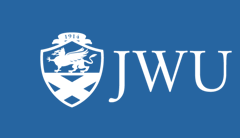To download dissertations and theses, please click on the appropriate "Download" button for your campus to log in and be e-verified. When you reach the "Sign into your JWU email" page, enter your JWU username and password.
Non-JWU users: Please talk to your librarian about requesting this dissertation through interlibrary loan.
Student work programs: Formulating organizational structures to improve effectiveness
Abstract
Undergraduate employment administrators have experienced increased demands from a variety of stakeholders to produce outcomes beyond the financial. Under these pressures, leaders at institutions of higher education have been challenged to bring both increased focus and improved organizational structure to student work programs. To frame the investigation around this issue, the study utilized best practices from the literature: executive leadership to provide momentum and support for unifying student work programs (Burke, 2003; Lijphart, 1999); educational outcomes linked to work success, career exploration, and academic experiences (Coplin, 2003; Lewis, 2008, Merritt, 2008); and student-centered approaches that focus on student development (Chickering, Frank, & Robinson, 1989). A mixed-methods approach with three components was used: historical research, qualitative interviews and a quantitative questionnaire. Systematic review of the literature resulted in an outline of historical events that spawned six different student work programs on college campuses. Interviews ( N = 6) were used to investigate an institution with an integrated, student-centered work program, reflective of best practices. Interview results provided the basis for a questionnaire designed and sent to colleges and universities in the Northeast (N = 89) to further assess organizational structures and best practices. Study results showed historical factors, such as authorizing legislation and funding mechanisms, influenced the organizational structure of student work programs, including a propensity to house programs in financial aid and career services. While a unified department hosting all six programs was rare, combining program administration did occur on all campuses. Most often, three (42%) or four (27%) programs were centralized into two (35%) or three (28%) departments. Departmental missions were shown to relate to first-ranked program priorities, illustrating the importance of organizational placement. Communication occurred only rarely between those who administer separate programs and coordination of goals or strategies even less frequently. Overall, this study provided an idealized model of best practices, but revealed substantial barriers. Recommendations propose that institutional leaders implement a mission to develop and assess learning outcomes through a unified structure within career services or a campus coordinating committee, and that professional associations take an active role in identifying and promoting best practices models.
Subject Area
School administration|Education history|Higher education
Recommended Citation
Long, Matthew J, "Student work programs: Formulating organizational structures to improve effectiveness" (2009). Dissertation & Theses Collection. AAI3355050.
https://scholarsarchive.jwu.edu/dissertations/AAI3355050

